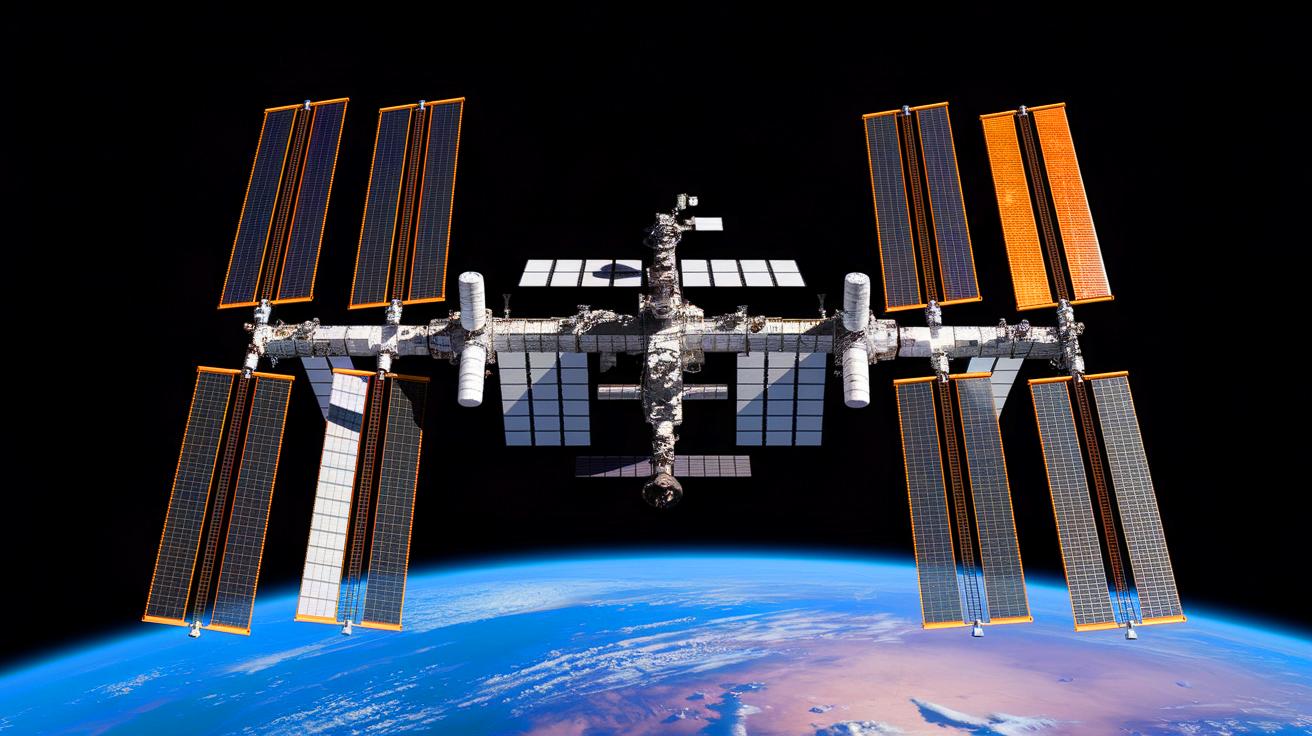- 🚀 The International Space Station (ISS) faces rising safety concerns due to structural cracks and air leaks.
- 💰 Proposed NASA budget cuts by the Trump administration threaten the safe deorbiting of the ISS by 2030.
- 🛰️ SpaceX is contracted to develop a U.S. Deorbit Vehicle (USDV), but Elon Musk suggests an earlier deorbit timeline.
- 🔍 The Aerospace Safety Advisory Panel stresses the need for adequate funding to manage increasing risks and ensure a safe transition.
The International Space Station (ISS) has been a beacon of global collaboration and scientific advancement. However, recent concerns regarding its safety have cast a shadow over its operations. Cracks and air leaks have plagued the station, and with the Trump administration’s proposed budget cuts to NASA, the future of the ISS seems uncertain. As NASA grapples with these challenges, the Aerospace Safety Advisory Panel (ASAP) has issued warnings about the increasing risks, emphasizing the need for immediate action and adequate funding to ensure the ISS’s safe deorbiting by 2030.
ISS Enters ‘The Riskiest Period of Its Existence’
During a recent meeting of the Aerospace Safety Advisory Panel, NASA officials highlighted the growing risks facing the ISS. The presence of cracks and persistent air leaks, some of which were identified using floating tea leaves, underscore the urgency of the situation. NASA plans to deorbit the ISS by 2030, with SpaceX developing a U.S. Deorbit Vehicle (USDV) to facilitate this process. However, SpaceX CEO Elon Musk has suggested that the deorbiting should happen sooner, adding complexity to the situation. Musk’s comments, combined with his assertion that the ISS has “served its purpose,” have sparked debate. Despite his conflict of interest, given SpaceX’s involvement, Musk’s influence is undeniable. The panel’s report may inadvertently support his stance, highlighting the critical phase the ISS has entered and the necessity for swift, strategic action.
Scientists create heat-resistant super corals that could save entire marine ecosystems from collapse
A Growing List of Concerns
The ISS has faced numerous challenges over the years, with the station’s Zvezda module being a particular point of concern. Leaks in the Zvezda module’s vestibule, known as PrK, have been under investigation by U.S. and Russian experts for years without a conclusive solution. This issue ranks high on the panel’s priority list. To mitigate risks, ISS managers have limited the repressurization of the PrK vestibule, which connects a docking port to the station. NASA and Roscosmos officials plan to meet in Moscow to discuss the ongoing investigation and strategize on reducing these risks. The collaboration between the two space agencies is crucial, as they work to ensure the station’s safe operation.
The Growing Risk of an Emergency Deorbit
The potential for an emergency deorbit of the ISS before the deployment of SpaceX’s USDV poses significant risks. An uncontrolled deorbit could result in debris raining down over populated areas, with catastrophic consequences. According to the safety panel, the risk to the public would increase substantially if the USDV is not in place. The panel stresses the need for a robust budget to manage the ISS as it nears the end of its operational life. Trump’s proposed budget cuts to NASA could exacerbate these challenges, making it essential for NASA to secure adequate funding. The panel’s concerns are further compounded by the costs associated with developing SpaceX’s USDV and the necessary launch infrastructure, which could strain NASA’s resources if funded solely from the existing ISS budget.
The Critical Need for Adequate Funding
Funding remains a pivotal issue for the ISS. Last year, NASA spent $993 million on ISS operations and maintenance, alongside $1.63 billion on crew and cargo transportation. The safety panel warns that building SpaceX’s USDV could further strain the budget. They express grave concerns that relying solely on the existing ISS budget for the USDV and launch infrastructure could compromise NASA’s ability to conduct safe and effective ISS operations. As the ISS approaches its final phases, maintaining adequate funding and resources is crucial to ensure a safe reentry. The panel appreciates the operational excellence of the ISS program but remains deeply concerned about the increasing risks and the cascading effects of budget shortfalls.
As the ISS navigates these turbulent times, the collaboration between NASA, SpaceX, and international partners will be essential. The challenges ahead are significant, but with the right resources and strategic planning, a safe transition can be achieved. How will NASA and its partners rise to meet these challenges and ensure the safe deorbiting of the ISS? The future holds many possibilities, and the decisions made today will shape the legacy of this monumental project.
Did you like it? 4.6/5 (30)
